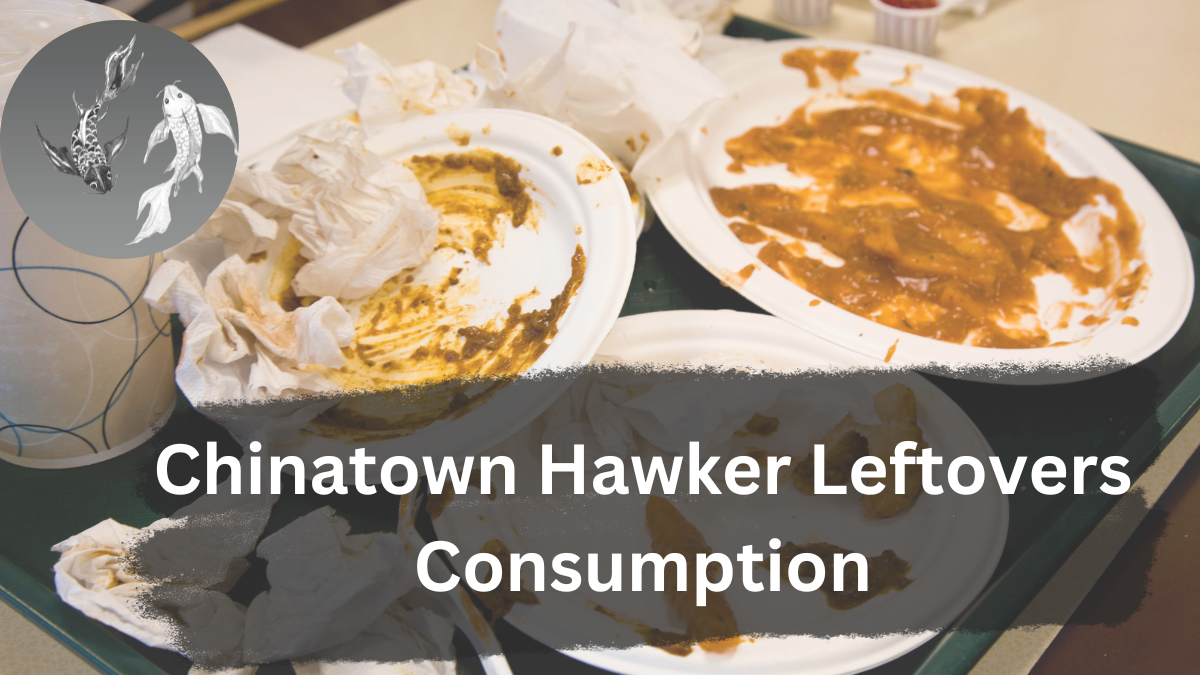Food waste is a global issue that impacts not only the environment but also the way we value resources and care for our communities. A recent phenomenon at People’s Park Food Centre in Singapore’s Chinatown has brought this issue to the forefront—elderly individuals consuming leftovers left behind by patrons. While their intentions to reduce food waste may seem admirable, this practice raises pressing concerns about health risks, societal responsibility, and sustainable living.
This article explores the practice of Chinatown hawker leftovers consumption, its implications, and the broader lessons we can learn about food waste and community welfare.
When Food Waste Turns into a Mission
Mr. Wang’s Story of Preventing Food Waste
One of the individuals at the heart of this discussion is 84-year-old Mr. Wang, a regular at People’s Park Food Centre. Unlike what many would assume, Mr. Wang’s decision to consume leftovers isn’t financially motivated. Instead, he’s driven by a personal mission to prevent food wastage.
Mr. Wang noticed a growing trend of hawker patrons ordering more food than they could finish, leaving behind plates with significant portions untouched. Rather than watching all this food go to waste, he began consuming what others left behind. For Mr. Wang, each meal picked from these trays is a stand against unnecessary waste.
He’s not alone. Other elderly individuals frequent the food center during peak meal times, similarly collecting uneaten portions left on tables or tray return points.
A Community Concern
Hawker center cleaners and stall owners have observed these behaviors, indicating that this practice is not isolated to Mr. Wang alone. While on one hand, such actions bring attention to the scourge of food wastage in urban areas, the health implications of these actions are concerning.
The Health Risks of Consuming Unknown Leftovers
While the intention of minimizing waste is noble, consuming food left by strangers poses serious health risks. Food safety experts warn against this practice, emphasizing the following risks:
- Foodborne Illnesses
Leftovers left exposed for extended periods can become a breeding ground for bacteria like Salmonella and E. coli. These microorganisms thrive when food is unrefrigerated, potentially causing severe foodborne illnesses.
- Contamination by Pests
Open food left out in crowded public spaces is susceptible to contamination from pests such as flies or rodents, which can introduce harmful pathogens.
- Uncontrolled Conditions
The health status of the original consumer is another variable. Without knowing if the initial diner handled the food hygienically, consumed part of it when sick, or used contaminated utensils, the risks increase significantly.
How Long is Food Safe to Eat?
Understanding basic food safety guidelines can help us make informed choices regarding leftovers:
- Can I Eat 5-Day-Old Leftovers?
Leftovers stored in the refrigerator are generally considered safe to eat for 3-4 days. However, this requires prompt refrigeration, airtight storage, and no visible signs of spoilage. Food left exposed at room temperature for more than two hours may already be unsafe.
- What About 2-Week-Old Leftovers?
Leftovers stored beyond 7 days in the fridge should be discarded, even if they look or smell fine. Prolonged storage allows bacteria to grow, increasing health risks.
The unregulated nature of consuming leftovers from strangers’ plates in public settings, however, bypasses these safety practices entirely, leading to significant concerns.
Food Waste in Perspective
Globally, approximately one-third of all food produced—around 1.3 billion tons—is wasted annually. Singapore isn’t immune to this trend; the country generated over 800,000 tons of food waste in 2022, with less than 19% of it recycled. At the heart of the issue lies urban food consumption habits, where surplus food orders and lack of awareness exacerbate the problem.
The actions of Mr. Wang and his peers highlight both the urgency of tackling food waste and the social gaps we need to address in urban communities.
Looking Ahead—Solutions and Actions
1. Reducing Food Waste Through Mindful Consumption
Hawker patrons can actively minimize food waste by ordering only what they can finish or taking the extra food home in containers to consume later. Public awareness campaigns at food centers can advocate for such habits.
2. Supporting the Elderly with Food Security
The regular collection of leftovers by elderly individuals also reflects gaps in community care. Policymakers and organizations can strengthen support systems for vulnerable populations by providing affordable or subsidized meals through local initiatives.
3. Ensuring Safe Donation Practices
Instead of letting untouched food go to waste, hawker centers and food establishments can partner with local organizations to safely distribute surplus food to those in need. For example, food banks and donation drives could step in to facilitate this process, ensuring hygienic handling and distribution.
4. Policies for Food Sustainability
Governments and stakeholders must encourage businesses to implement food waste reduction practices, from more accurate portion sizing to better waste management systems.
Building Awareness and Compassion
The sight of someone like Mr. Wang consuming leftovers serves as a stark reminder of the disconnect in our food systems. While on one hand, thousands of plates are cleared and disposed of, on the other, individuals take risks to ensure that the food doesn’t go to waste.
From food education campaigns in schools to “ugly food” initiatives that normalize buying imperfect produce, creating awareness is a necessary first step toward reducing food waste and fostering more sustainable consumption habits.
FAQ’s About chinatown hawker leftovers consumption

Is it safe to eat leftovers from a hawker center?
It’s generally risky to consume leftovers from unknown sources. Exposure to public settings makes the food vulnerable to contamination, posing hygiene and safety concerns.
How can I reduce food waste when dining out?
Order only the amount of food you can finish, share dishes with companions, or pack leftovers to eat later at home. Most establishments are happy to provide takeaway containers or allow patrons to bring their own.
What can businesses do to help address food waste?
Businesses can implement waste reduction policies such as donating surplus food, offering smaller portion sizes, or creating awareness campaigns about the impact of food waste.
A Call to Action Against Food Waste
The tale of leftovers in Chinatown hawker centers is more than about health—it’s a profound reflection of how much we take for granted in a world where 1 in 9 people experiences hunger. It serves as a wake-up call to urban societies to reevaluate how we handle excess and whether our communities are structured to ensure no one has to settle for unsafe options.
The next time you sit down for a meal, pause and think. Can you finish everything on your plate, and if not, how can you make sure it doesn’t go to waste? Simple, conscious actions can lead to a more sustainable world.

